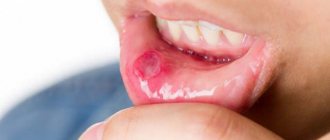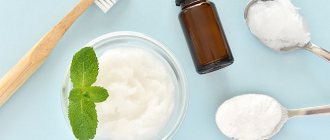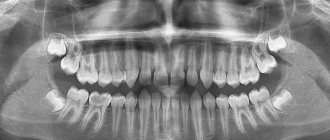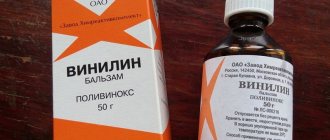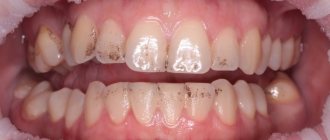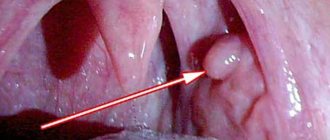- What is tartar
- How is tartar formed?
- Types of Tartar
- Symptoms and consequences of tartar
- How to prevent tartar formation
- Methods for removing tartar
- How is tartar removal performed?
- Removing tartar at home
- Side effects from scaling
- Proper brushing of teeth
- Prices for tartar removal in Moscow
What is tartar and what is the cause of the disease. What methods will help eliminate this aesthetic problem. Is it possible to remove formations without resorting to the help of a dentist?
What is tartar
Tartar is a formation that is a keratinized plaque consisting of poorly removed food debris, calcium, phosphorus and iron salts covered with a biofilm of dead bacteria.
You can find fossilized food deposits over the entire surface of the dentition, but most often the concentration is on the lower incisors, closer to the gums and on the sides.
Please note that tartar can penetrate the back wall and inside the gums. It is usually found in hard-to-reach places where it is impossible to remove food debris with a toothbrush.
Teeth whitening with coconut oil
In fact, coconut oil cannot significantly lighten teeth as it does not have whitening properties. But it helps eliminate harmful bacteria that cause yellow plaque to appear on teeth, which helps restore the enamel to its natural color. However, it is not a fact that the effect will be the way you want.
It is better to use professional mechanical or ultrasonic teeth cleaning; both of these methods allow you to completely remove soft yellow plaque from your teeth, and ultrasound can also destroy hard deposits - tartar.
Traditional recipe for whitening paste made from coconut oil:
- You will need to mix two tablespoons of coconut oil and the same amount of baking soda to form a paste.
- Add 10 drops of peppermint oil or other essential oil to help improve the smell and taste of the paste.
- When using this paste, carefully monitor the condition of your teeth and gums. Everyone’s body reacts individually; in some cases, tooth sensitivity may increase or irritation on the gums may appear, then the procedure should be stopped.
How is tartar formed?
Food particles attach to tooth enamel. Most often from soft and sticky foods, such as flour products.
Under the influence of saliva, a film of glycoproteins is formed; if you do not rinse or brush your teeth, then after 4 hours streptococci bacteria come into play, and actinomycetes join them. After 2 days, streptococci decrease, but the number of anaerobic bacteria increases. After 7 days, spirochetes and motile rods appear.
Remains of food and the bacteria that multiply on them are gradually covered with a film of saliva, smoothed out and hardened. Tartar grows because new layers are added to existing particles.
Fermentation and metabolism processes occur under dental plaque, during which acids are formed. They weaken tooth enamel so that tooth decay can develop over time.
Tartar can also cause bad breath.
Plaque can eventually turn into tartar through mineralization—minerals from saliva are deposited in plaque and make it very hard.
This is how complications arise; as a result of a neglected condition, you can lose a healthy tooth, but ringed with plaque.
The rate of mineralization varies from person to person. It all depends on the following factors:
- the amount of saliva produced;
- its composition and activity of secretions;
- quality of oral hygiene;
- nutritional characteristics;
- violation of salt exchange in the body;
- wearing dental structures (prostheses);
The predominance of solid foods (raw vegetables) significantly reduces the development of plaque. The products act as a cleaning agent, helping to remove dirt from the enamel. Chewing for a long time releases more saliva, which has an antibacterial effect.
Oil pulling: how to do the procedure?
Do oil pulling in the morning on an empty stomach. Those who are late for work can combine the procedure with a morning shower. Measure out one tablespoon of oil and rinse your mouth for 5 minutes, washing your gums and teeth. After this, spit out the used oil and rinse your mouth thoroughly with warm water. Then brush your teeth as usual.
You will notice improvements even if you rinse your mouth with oil only three times a week, but still do not forget - Ayurveda recommends doing this every day.
What problems that have arisen in the oral cavity can be eliminated using this method? why and how to rinse your mouth? As stated in ancient treatises, this ancient Indian method of Ayurvedic medical school gives excellent results in the following cases:
- in the treatment of carious teeth to prevent the occurrence of new foci of caries;
- to eliminate periodontitis, periodontal disease, bleeding gums;
- for disinfection of the oral cavity and treatment of inflammation;
- to combat pathogens that inhabit dental plaque;
- to eliminate plaque on the tongue and bad breath, as well as to combat tartar;
- to soften mucous membranes and throat;
- for dryness, soreness, hoarseness of voice;
- to improve the condition of inflammation of the ligaments, laryngitis, pharyngitis;
- for the general health of the mouth and its mucous membranes.
When carried out regularly, the procedure helps to cure chronic oral diseases. The method successfully fights throat diseases, dissolves tartar over time and strengthens tooth enamel.
Oil pulling: Ancient doctors could not explain the effect of such a procedure from a scientific point of view. Nowadays, the opinion of doctors is based on the results of a study of the mechanism of action of vegetable oil on microorganisms, carried out in a number of laboratories.
Today it has been proven that when microorganisms are placed in an oil environment, after some time the oil begins to penetrate into their cells. The microorganism cannot cope with this and dies.
The high lipophilicity of the microbial membrane contributes to the harmful effects of oil on it. In addition, essential oils (tea tree oil, lemon, orange, chamomile), in addition to fatty acids, contain substances with an antibacterial effect.
The fight against caries and diseases of teeth and gums is based on the same principle.
The dissolution of dental plaque and plaque on the tongue is due to the fact that it consists of mucous particles with bacterial residues. They quickly dissolve and are washed off with oil baths.
Vegetable oils (preferably cold pressed) are suitable for oil rinses, since they contain the maximum content of nutrients and higher fatty acids. Sunflower seed oil is best used after additional purification (refining).
At the same time, its taste improves and the amount of harmful components decreases. To increase antibacterial effectiveness and organoleptic properties, essential oils or their compositions are added to fatty oils.
Commonly used oils: sunflower, olive, flaxseed, tea tree oil.
Sunflower
Sunflower oil is an extract from sunflower seeds. Healthy and pleasant to taste after refining. Due to its low cost, it is used more often than others. Rich in fatty acids, microelements, as well as vitamins A, E, and carotenoids. It has antibacterial properties and successfully restores mucous membranes.
Olive
When using oil for rinsing the mouth after the first squeeze, its restorative effect improves, since polyunsaturated fatty acids best promote the healing of microcracks, microtrauma of the gums and treat damaged mucous membranes. It is also rich in fat-soluble vitamins and microelements.
Linen
The fundamental difference of this oil is that it has a high content of mucous components. They have an astringent effect against bleeding gums, microtraumas, and restore cell membranes.
Flax oil and its seeds are a folk remedy for the treatment of stomach ulcers, useful for gastritis, indigestion, constipation, therefore, after rinsing your mouth with oil, it is recommended to swallow it.
To preserve its beneficial properties, flaxseed oil should be kept in a tightly closed container without access to light and air at a temperature not exceeding 25 degrees Celsius.
This oil belongs to the category of essential oils and is obtained by steam distillation.
It is characterized by a high concentration, so before the procedure it is diluted with sunflower oil at the rate of 15-20 drops per glass.
It has antiseptic, antibacterial, antifungal and anti-inflammatory effects. Has an immunostimulating effect. Complexly stimulates the protective functions of the oral mucosa and prevents infection.
It is often difficult to get used to holding a large volume of oil in your mouth for a long time. Rinse your mouth with oil starting from five tons per day, gradually extending the duration of the procedure by one or two tons every three days. The total time spent by the end of the third week should be twenty tons, and the volume of oil should reach 15-30 ml (1-2 tablespoons).
Baths are carried out in the morning before brushing your teeth, on an empty stomach. It is recommended to periodically change the type of oil to maintain the effectiveness of the procedure. It’s easy to get into the habit of rinsing your mouth with oil every day; the benefits will be invaluable.
Types of Tartar
Fossils on enamel come in different types depending on location. So they distinguish:
- supragingival stones – formed on the first molars (lateral) and front or lower teeth;
- subgingival - hard areas that penetrate soft tissue;
- stone bridge – covering the main and adjacent teeth.
Symptoms and consequences of tartar
Patients experience the following symptoms:
- bad breath;
- bleeding gums;
- caries;
- purulent discharge;
- gingivitis;
- pulpitis;
- periodontitis – inflammation of tissue areas near the root of the tooth;
- mobility and tooth loss.
Gingivitis
The initial form of gum disease.
If left untreated, gingivitis can develop into periodontitis, which is a serious, irreversible gum disease and the most common cause of tooth loss in adults.
The main 4 signs of gingivitis:
- Bleeding gums. Healthy gums do not bleed. If blood comes out when using a toothbrush or floss, this may indicate the onset of gingivitis. Even if it happens from time to time. The symptom should not be ignored as it may be a sign of the onset of gum disease.
- Unpleasant smell. There are many reasons for a bad odor: specific foods, poor hygiene, but it can also be the first sign of gingivitis. This is due to the fact that the bacteria that cause gum disease produce an unpleasant odor by breaking down food particles in the mouth.
- Swollen gums. They are usually pink and firm. Redness and swelling may indicate the onset of the disease.
- Receding gums. They begin to separate, and the root of the tooth is exposed, the incisors appear longer. Increased sensitivity is another sign.
A common cause of toothache is inflammation of the dental nerve, called pulpitis. Anyone suffering from this should seek help from a dentist as soon as possible.
Pulpitis
In acute pulpitis, pain usually occurs spontaneously. The pain may be constant or occur periodically. In rare cases, the inflammatory process is completely painless.
If the affected tooth is sensitive to pressure and impact, this is a sign of a dead dental nerve. It hurts when you touch the tongue, but especially when you squeeze it. The pain is often worse at night, as the warmth of the bed increases the inflammatory process. If left untreated, bacteria from the medullary cavity of the tooth can penetrate through the hole at the root tip into the surrounding bone and soft tissue. Accordingly, inflammation spreads, the cheek and lymph nodes swell.
Periodontitis
Periodontal disease is defined as chronic inflammatory disease of the gums. It is mainly caused by bacterial plaque (biofilm, plaque), especially in old age.
As a result of inflammation, your teeth may hurt and your gums may bleed more easily. If left untreated, periodontitis can also lead to tooth loss.
Patients with periodontitis usually show few symptoms at first. However, some signs may indicate the disease:
- bleeding gums;
- red and swollen gums;
- Gum recession;
- open and sensitive necks of teeth;
- putrid odor from the mouth;
- unpleasant taste, especially when pus leaks from the inflamed areas;
- The spaces between the teeth widen;
- loose teeth, misaligned teeth.
Prevention
It is better to prevent any disease than to treat it later. For patients who are at risk, it is recommended to carry out preventive measures twice a year. These include taking antifungal medications and immune-boosting vitamins. Also, to avoid candidiasis of the oral mucosa, you need to eat right, maintain personal hygiene, and go to the hospital in a timely manner.
In summary, it should be noted that candidiasis is easily treated when the first symptoms appear. If the disease is prolonged, complications begin. To avoid side effects and relapses, you need to take antifungal drugs and act locally on plaques that appear in the mouth as the disease develops.
Recommended video:
How to prevent tartar formation
By observing good oral hygiene, you can prevent the (re)formation of tartar:
- Brush your teeth thoroughly at least twice a day using a good manual or electric toothbrush and fluoridated toothpaste.
- Clean between teeth once a day using dental floss or interdental brushes.
- With these measures it is possible to prevent the formation of plaque and therefore tartar, as well as to prevent tooth discoloration and decay.
Properties of coconut oil
Many ailments begin their journey in our body from the oral cavity, since this is where the optimal conditions are for the proliferation of bacteria and viruses. They enter the bloodstream through the gums and other areas of the mucous membrane. In addition, pathogenic microbes penetrate the teeth, destroying enamel and dentin. Bacteria enter the stomach with saliva and food.
At the same time, brushing your teeth allows you to get rid of about 10% of pathogens if you brush with regular store-bought toothpaste. You can enhance its effect with coconut oil, which not only helps to better clean the oral cavity, but also improves the health of teeth and gums, increasing their protection.
- Regularly rinsing your mouth with coconut oil will help strengthen your entire immune system, reducing the likelihood of bronchitis, migraines, sinusitis and other diseases.
- In addition, coconut oil relieves bad breath, inflammation of the gums, and reduces the likelihood of the formation of tartar and ulcers on the mucous membrane. The oil also reduces tooth sensitivity.
- Coconut oil promotes good absorption of various minerals by the body: magnesium, calcium, etc.
It is worth remembering that no matter how large a range of beneficial properties the oil has, specialized dental products are much more effective.
Methods for removing tartar
- Physical method. Consists of mechanical destruction of deposits using a dental instrument with a thin tip. Modern medicine uses the Air flow system. Fine particles of soda are applied under high pressure, causing a stream of air containing the powder to knock the fossils off the tooth. A subsequent stream of water washes away the separated particles.
- Chemical method. Allows you to remove formations with the help of compounds that dissolve the basis of tartar - deposits of mineral salts. A composition is applied to the teeth that softens plaque, but does not cause significant harm to the enamel. Then the impurities are removed.
- Ultrasound. Ultrasonic waves do not injure teeth and gums. Contraindicated in patients using a pacemaker.
- Laser. The laser method can be used specifically in dentistry for various procedures. It is one of the most effective and expensive procedures. The laser beam is very thin and can be used precisely. This way, only truly unwanted tissue is destroyed. Healthy tissues are preserved. Local anesthesia is often not required. Laser treatment does not cause noise or vibration like drilling. The virtually painless treatment is especially suitable for anxious patients.
Ways to Use Coconut Oil for Teeth Whitening
The most popular way is as follows:
- take a tablespoon of oil;
- rinse your mouth with it for about 15 - 20 minutes;
- Once you're done, spit out the oil and brush your teeth.
Important:
- Never swallow the oil after the procedure, as it accumulates harmful bacteria that must be removed from the body.
- If the procedure is carried out correctly, the oil should turn into a light milky liquid.
- If the butter has hardened, chew it first to warm it up.
- It is best to carry out the procedure in the morning on an empty stomach before brushing your teeth, but if this is inconvenient, you can choose any other time.
- Try not just to keep the oil in your mouth, but to intensively rinse the entire cavity with it, pass it through your teeth back and forth.
- After the procedure, it is better to spit the oil into the toilet or trash can; it is very greasy, so it can clog the sink.
- Don't forget to rinse your mouth with water and brush your teeth thoroughly.
How is tartar removal performed?
At the first stage, the presence or absence of allergies in the patient to drugs will be determined.
Then the degree of sensitivity of the teeth is determined, and an anesthetic is applied as necessary.
The method by which the procedure will be carried out is selected.
For rough tartar removal, an ultrasonic scaler is often used first. This is followed by processing with special hand tools to remove stubborn dirt.
The enamel is cleaned of residual particles of contamination and the doctor begins to polish the teeth so that the surface is completely smooth.
Small irregularities and areas of rougher texture on the teeth are also smoothed out, providing protection against further plaque buildup.
The enamel of the teeth is coated with varnish.
After the work has been done, the dentist will advise how often you should plan to remove tartar.
It should be noted that professional cleaning is only intended to be an addition to daily thorough oral hygiene and should in no way be considered a replacement for brushing your teeth twice daily with fluoride toothpaste.
What does modern science say about this?
Up to seven hundred species of various microorganisms live in our oral cavity, and their total number is a multi-million army.
Naturally, many of them are useful. Their main task is to facilitate the absorption of food. However, there are also a lot of pathogenic microorganisms. For example, streptococcus mutans and candida fungus, which provoke caries and gum inflammation. However, the harm from them is not limited to these diseases. When our body's immune system is weakened, the action of pathogens quickly spreads far beyond the oral cavity and causes serious internal inflammation. Disturbs the functioning of the heart, brain and other organs.
Removing tartar at home
Home remedies for tartar can be useful for removing soft plaque without the help of a dentist.
If there is already a hard coating, then you should definitely seek treatment from a specialist. Trying to pick out deposits on your own will not work. As a result, the enamel will only be damaged. It cannot be restored.
- Vinegar and lemon. The acid contained in vinegar and lemon acts against tartar. However, the taste is unpleasant, and the acid has an aggressive effect on tooth enamel. These home remedies should be used no more than once a month.
- Baking powder. The crystals found in baking powder and baking soda act like sandpaper and remove unwanted coating. Dip your fingertip in baking soda and vigorously rub the affected areas. However, the powder can potentially damage healthy gums and tooth enamel.
- Tea tree oil. Rinse your teeth thoroughly with a solution of 1-2 drops in a glass of warm water.
- Xylitol. Xylitol is a sugar substitute and, as an ingredient in chewing gum, can support oral hygiene. Research shows that xylitol is beneficial for dental health.
- Tincture of myrrh. Has a preventive effect. Brush sensitive areas along the gum line to reduce acid buildup. The liquid is also used for gum inflammation caused by tartar or its removal.
- Coconut oil and olive oil. Take one or two tablespoons of natural oil into your mouth and thoroughly rub the liquid between your teeth for several minutes. You must be careful not to swallow it and then rinse your mouth thoroughly with clean water.
- Sesame seeds. Chewing sesame seeds vigorously provides the body with healthy fats and also helps against the formation of tartar. Apply the well-fertilized seed paste several times to the affected areas of the teeth, using your tongue as a tool to create the necessary friction for grinding.
- Celandine. A good remedy not only for skin diseases, but also helps cleanse teeth of plaque. Prepare a decoction and rinse your mouth without swallowing. The plant contains toxins that can harm the stomach.
- A mixture of lemon juice and black radish. Suitable for treatment and preventive measures. Apply to teeth, then rinse with warm water. You cannot clean with a brush after acidic juice, because it softens not only the stones, but also the enamel. You need to wait 30 minutes.
- Decoction of burdock and green beans. Burdock can be picked locally or purchased dry crushed leaves at the pharmacy. The combination of these plants will help soften the stratum corneum.
- Dental floss. You can use it to thoroughly and permanently clean hard-to-reach spaces between teeth.
Traditional methods of treating oral candidiasis
Traditional medicine has long been famous for its effectiveness, accessibility and harmlessness. It is based on recipes based on natural ingredients of plant and animal origin.
Garlic helps with fungal diseases, as it has an antifungal effect. If you have thrush in your mouth, you can use garlic juice as a gargle. You can also eat 1 clove of garlic per day, chewing thoroughly (as much as possible).
Dairy products (kefir, yoghurt) that contain lactic bacteria help cope with pathogenic microflora. Instead of feeding products, you can use bioactive supplements based on lactic acid bacteria.
Other folk methods include rinsing with antifungal and antiseptic effects. To disinfect and relieve inflammation, soda, salt, iodine, Miramistin, Chlorhexidine, alcohol tinctures, and onion juice are used.
Medicinal plants
The following have powerful antifungal properties:
- oregano, which is used in the form of a decoction for rinsing;
- oregano essential oil can be used to treat mucous membranes;
- cloves can be used internally, it not only has antifungal properties, but also improves immunity;
- Olive oil vitaminizes, nourishes, and disinfects.
Herbal remedies can be used as adjunctive therapy along with antifungal medications.
Natural juices
It is recommended to use natural unsweetened and non-acidic vegetable juices for candidiasis. Berries and fruits contain high amounts of sugar and acid, which promote the growth of pathogenic microorganisms. During treatment, carrot, pumpkin, squash, and cabbage juices are recommended. They are rich in vitamins and minerals, which increase the body's protective functions and have an antimicrobial effect.
Side effects from scaling
These effects can appear after professional removal and when using folk remedies.
- Uncomfortable sensitivity from ultrasound: Some patients are sensitive to pain from ultrasound because the dental nerve or gums may be irritated. In addition, some people are bothered by accompanying sounds.
- Temperature Sensitivity: Once plaque is removed, teeth may be more sensitive to stimuli such as cold or heat. This is because tartar protects the tooth from these irritants. After removal, he first needs to get used to the intensity of the stimuli.
- Loose teeth: If you begin to notice loose teeth after tartar removal, especially the incisors, this may be a sign of periodontitis, which was previously unrecognized because the tartar was holding the teeth together. Depending on the severity of periodontitis, the dentist treats the bacterial infection of the periodontium with medications.
Symptoms and signs of the disease
Candidiasis develops gradually and is characterized by the following symptoms:
- burning in the mouth;
- discomfort while eating;
- the appearance of a white coating on the tongue;
- white spots throughout the mucous membrane;
- constant dryness.
If one of the symptoms occurs, you should consult a dentist or infectious disease specialist to determine a diagnosis. It is important that plaque, dryness and growths can also occur with bacterial diseases, which are treated differently. Therapy must be prescribed immediately, because the fungus becomes a cause for the development of other diseases.
Proper brushing of teeth to remove plaque
Bass technique has been developed to remove food debris from the gum area. It is performed according to the following algorithm:
- Apply paste to brush
- Rinse your mouth with water
- Position the brush parallel to the teeth
- Slightly tilt the brush approximately 45 degrees.
- Move the device without pressing
- Then move in a circle, trying to get the bristles between the teeth
- Go over the entire jaw 15-20 times
- Move in a circular motion along the side teeth
- Do not ignore your tongue; 80% of pollution accumulates on it.
- Remove plaque from tongue
- There are brushes with a rough or bumpy back wall, specially made for cleaning this organ.
- After the outer part is completed, it is necessary to move on to the back wall of the incisors and molars. To do this, the brush is placed vertically with its bristles.
- It is recommended to carry out the procedure near a mirror to see the correctness of your actions.
As you can see, problems in the oral cavity and teeth occur in most cases due to non-compliance with hygiene rules.
Residues of food and the accumulation of bacteria on them create a plaque that hardens over time and cannot be removed by regular cleaning.
This is not only an aesthetic defect, but also serves as the basis for the development of dangerous diseases.
Brushing your teeth twice a day and regular dental check-ups will help reduce the risk of formations.
Which oil to choose
There are no specific rules by which you need to select a rinse.
Any herbal product will do.
Amaranth oil
Amaranth is a plant that is loved and actively used in many countries. Its medicinal properties are quite widely used in cooking, medicine and cosmetology. Thanks to cold pressing, beneficial elements remain in the oil - Omega acids and phospholipids, vitamins E and D, calcium, copper and iron, phosphorus and magnesium.
The substances have a good effect on the nervous system, metabolism, appearance, in particular on the condition of the skin, and most importantly, they prevent the aging process.
The benefits of amaranth oil are manifested not only as a result of rinsing, but also from administration. In addition, it is dripped into the nose and ears to eliminate symptoms of ENT diseases. Absorbed by the mucous membrane, the product:
- improves the condition of the mouth and throat;
- speeds up metabolism;
- strengthens the immune system;
- relieves toothache.
In addition, the squeeze is used for diseases of the endocrine system and menopause, osteochondrosis and osteoporosis, muscle cramps and anemia, fungal infections, periodontal disease and stomatitis. Amaranth strengthens the skeletal system and helps ease pregnancy.
Oil can be harmful if:
- high cholesterol;
- chronic pancreatic disease;
- pancreatitis and ulcers;
- individual intolerance.
You can buy the product in online stores.
Use the product during outbreaks of epidemics, after taking antibiotics and after illnesses with complications.
Linseed oil
Flax oil is famous for its healing properties. Regular use brings the body's functioning back to normal. If you get into the habit of rinsing your mouth with flaxseed oil, your immunity will become stronger, your teeth will become stronger, and the unpleasant odor and bleeding gums will disappear.
Flaxseed contains vegetable fats and Omega acids, protein, vitamins A, B, E, P and many other biologically active substances.
Positive results from mouth rinse:
- strengthening enamel and whitening teeth;
- relieving inflammation;
- stopping bleeding gums;
- relief from heartburn;
- destruction of bacteria in the oral cavity;
- increasing immunity.
Use with caution in diseases of the pancreas and gallbladder, diarrhea, pregnancy, as well as during treatment with antiviral drugs and in children under 3 years of age.
Before using any oil, consult a doctor.
Sunflower seed squeeze
Sunflower oil can be considered a strong disinfectant. Thanks to its properties, unrefined milk easily copes with toxins and bacteria in the mouth and removes unpleasant odors, removes plaque and yellowness, and strengthens enamel. Another important effect of rinsing is the fight against many diseases.
By irrigating the oral cavity with sunflower oil, you strengthen the respiratory tract system, treat gastritis and help normalize blood pressure. It is better to use unrefined, “live” one. Refined does not contain as many beneficial properties.
It is not recommended to use vegetable oil for people who are overweight and have chronic gastrointestinal diseases.
Coconut oil
The list of beneficial properties of coconut is varied:
- strengthens the immune system;
- fights bacteria and viruses of influenza and hepatitis, HIV and cytomegalovirus;
- reduces cholesterol;
- normalizes blood pressure and sugar;
- improves the condition of gums, teeth and bones.
The mouth is the most suitable place for bacteria to thrive; it is where many diseases originate. Brushing your teeth helps solve the problem by only 10%, and rinsing with coconut oil twice a day not only freshens your breath, but also increases the body's resistance to dangerous microbes.
If you carry out the procedure regularly, you can get rid of many problems: migraines, insomnia, sinusitis, bronchitis. Over time, you will forget about visiting the dentist. Coconut oil protects against oral candidiasis and scurvy, coats the teeth and prevents the formation of stone, reduces sensitivity.
There are no contraindications other than individual intolerance.
Tea tree oil
Even the ancient Hindus used tea tree oil to treat many diseases caused by bacteria and viruses. Recently, scientists have come to the conclusion that this remedy is not just an antiseptic, but also a natural antibiotic. Due to this, it is widely used in the treatment of ENT organs and the oral cavity.
Using the oil gives the following results:
- plaque is removed and the development of caries is prevented;
- swelling and bleeding of gums decreases;
- the risk of periodontal disease and periodontitis, the herpes virus is reduced.
It is not recommended to use by pregnant women and children under 6 years of age without consulting a doctor.
Olive squeeze
Previously, olive oil was considered a gift from the gods. It is rich in vitamins A, D, E and K. It also contains phenols, linoleic, oleic acids. Moreover, the product is absorbed 100% in the human body. It has a choleretic effect and is useful for the digestive system, skin, oral cavity, and throat mucosa. Helps cure sore throat and strengthen tooth enamel.
Contraindicated for people with cholecystitis or cholelithiasis.
Remember, olive oil is very high in calories - 900 kcal per 100 g.
Sesame oil
Sesame seeds have long been used in Ayurveda. Their beneficial properties have a positive effect on the body:
- prevent the development of caries;
- strengthen gums;
- relieve dental diseases.
In Ayurvedic practice there are many recipes aimed at improving health and enriching the body with vitamins and essential substances. The healing secret of rinsing with sesame oil is that lipids destroy bacteria in the oral cavity, restore enamel, and return the natural whiteness of teeth.
Being absorbed by the mucous membrane, the oil has a beneficial effect on the skin, wrinkles are smoothed out, and allergic reactions go away. Hair becomes healthier after just a few uses. In addition, 100 g contain the daily requirement of calcium.
There are no contraindications, but you should still not consume oil in excess. It causes diarrhea and produces excess calcium. Experts do not advise pregnant women to get carried away; this can have a bad effect on the development of the fetus.
Prices for tartar removal in Moscow
| Removal of dental plaque (1 tooth) | 150 rub. |
| Ultrasonic cleaning (1 jaw) | 2000 rub. |
| Comprehensive professional preventive oral hygiene (including ultrasonic cleaning, Air Flow, polishing and fluoridation) | 5500 rub. |
| Polishing 1 tooth with abrasive paste | 500 rub. |
| Local enrichment of the 1st tooth with fluoride | 300 rub. |
| Fluoridation (1 jaw) | 2000 rub. |
| Air-flow (1 tooth) | 250 rub. |
| Air-flow (1 jaw) | 2000 rub. |
Consumer Reviews
SolAlena777 about Asepta Fresh mouth rinse (irecommend.ru)
“Recently, I have been hearing more and more positive reviews about ASEPTA products. So I decided to try something. The ASEPTA FRESH mouth rinse caught my eye...
...I liked the packaging design. Reminds me of a flask. As if the product had just been brought from a chemical laboratory...
...Active components contained in the rinse aid:
- Xylitol and potassium citrate protect tooth enamel and help reduce tooth sensitivity;
- Extracts of sage, chamomile and witch hazel have antimicrobial and anti-inflammatory effects
- Potassium and sodium pyrophosphates prevent the formation of tartar
- Lime and mint provide a pleasant taste and fresh breath
...I really liked that there was no vigor. The mouthwash reminds me of Schweppes carbonated drink, only without the gases and without as much sugar.
I use it 2 times a day, that is, in the morning and in the evening after brushing my teeth with toothpaste. I probably rinse my mouth for at least 20 seconds. To be honest, I try to keep the mouthwash in my mouth longer because I like the taste and I don’t experience any discomfort during use.
For me, a rinse aid is, first of all, protection against plaque throughout the day. I can note that the rinse aid copes with this with a bang. The feeling of clean, plaque-free teeth lasts throughout the day. Maybe this effect weakens a little in the evening, but I like the result...
...I was quite satisfied with the result. Most likely, I will buy ASEPTA FRESH mouth rinse again!”
Sources:
- Study of the clinical effectiveness of treatment and prophylactic agents of the Asepta line in the treatment of inflammatory periodontal diseases (A.I. Grudyanov, I.Yu. Aleksandrovskaya, V.Yu. Korzunina) A.I. GRUDYANOV, Doctor of Medical Sciences, Prof., Head of Department I.Yu. ALEXANDROVSKAYA, Ph.D. V.Yu. KORZUNINA, asp. Department of Periodontology, Central Research Institute of Dentistry and Maxillofacial Surgery, Rosmedtekhnologii, Moscow
- Report on determining/confirming the preventive properties of toothpaste “ASEPTA PLUS” GENTLE WHITENING” Author: doctor-researcher A.A. Leontyev, head Department of Preventive Dentistry, Doctor of Medical Sciences, Professor S.B. Ulitovsky First St. Petersburg State Medical University named after. acad. I.P. Pavlova, Department of Preventive Dentistry
- The role of anti-inflammatory rinse in the treatment of periodontal diseases (L.Yu. Orekhova, A.A. Leontyev, S.B. Ulitovsky) L.Yu. OREKHOVA, Doctor of Medical Sciences, Prof., Head of Department; A.A. LEONTIEV, dentist; S.B. ULITOVSKY, Doctor of Medical Sciences, Prof. Department of Therapeutic Dentistry of St. Petersburg State Medical University named after. acad. I. P. Pavlova

